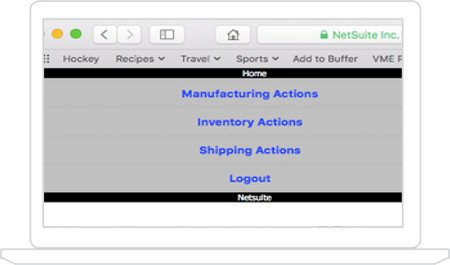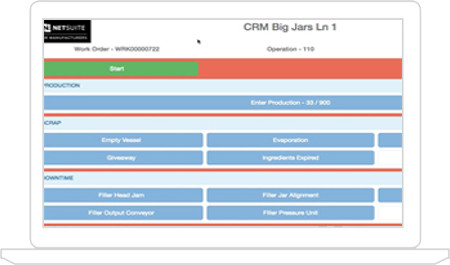Manufacturing Execution System
NetSuite provides innovative, real-time, cloud-based solutions to get the most up-to-date information from production
Obtaining information from your production facilities, regardless of location, is vital to the short term execution of your business and your long term strategic planning. NetSuite offers both a traditional barcode scanner-based interface and an innovative and interactive tablet app. While the barcode scanner is designed for speed of data entry, the tablet device features a rich interface that provides unparalleled feedback about what’s happening in the user’s work center and / or machine.
Features
Barcoding
NetSuite’s Advanced Manufacturing has a native barcoding application that will run on any device with a browser and streamline the collection of the most common transactions including labor tracking, work order completions, material movements, PO receipts and shipping. All native shop floor facing reports can be printed with barcodes to ensure data accuracy.
Key Capabilities:
- Standard interface
- Barcoded Travelers and Dispatch Lists
- Improved Data Accuracy

HMI / Tablet
Obtaining accurate information from the shop floor is vital to all aspects of a manufacturing business and without it, you run the risk making critical business decisions without all of the necessary information. Barcode scanners have typically been used to gather production information, but they are limited in the amount of information they can feed back to the user / operator. So NetSuite offers an intelligent tablet interface that provides instant feedback and visual warnings to the user.
- User configurable interface
- Real-time or delayed processing
- Visual indicators of down time, etc.





























